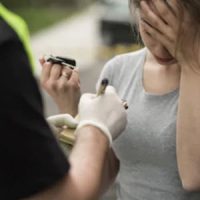Beating the Breathalyzer in a Virginia DUI

Breathalyzers, like all other machines, aren’t 100 percent accurate 100 percent of the time. In fact, the Breathalyzer has more flaws than many other gadgets. A Breathalyzer is just a portable, updated version of the 1920s Drunk-O-Meter. Both devices use breath alcohol level to estimate blood alcohol level. The same basic design flaws remain. These flaws often loom large in a .08, .09, or other borderline BAC case.
Most jurors assume Breathalyzers are reliable and modern instruments which are usually reliable. Once they learn that a Breathalyzer is like a miniaturized 1920s radio with a pair of nice headphones, that belief changes. That change makes it much easier for a Leesburg criminal defense lawyer to beat the odds and discredit breath test results in court. “Discredit” doesn’t mean “disprove.” The state, not the defendant, has the burden of proof in criminal cases.
Procedural Issues
Frequently, a Leesburg criminal defense lawyer can exclude breath test results, regardless of their scientific reliability.
Officers must have probable cause to demand chemical samples. Probable cause is a nebulous level of proof that’s somewhere between reasonable suspicion (field detention) and beyond a reasonable doubt (criminal trial).
Because of this higher burden of proof, physical symptoms, like bloodshot eyes, may be insufficient to establish probable cause. Such proof usually constitutes reasonable suspicion, but that’s it.
Therefore, prosecutors must normally rely on field sobriety test evidence. If the defendant refuses to perform all three approved tests (horizontal gaze nystagmus, one-leg stand, and walk-and-turn), sufficient evidence may be unavailable. The test results could also have reliability issues, perhaps if an officer made a defendant walk a straight line in a rainstorm.
However, we’re getting ahead of ourselves. The stop itself must be legal. Nervous movements (furtive movements), like a quick glance into a rear view mirror, usually aren’t reasonable suspicion.
Breathalyzer Flaws
Those 1920s radios with those huge dials and small antennas made it almost impossible to get a good signal. The Breathalyzer inherited many of its flaws from the Drunk-O-Meter. Examples include:
- Mouth Alcohol Level: When subjects belch or burp, alcohol particles in the stomach gush into the mouth. This elevated mouth alcohol level skews the BAC estimate. A required observation period isn’t strictly enforced. So, in most cases, there’s no telling how great this effect is.
- Recent Consumption: On a similar note, alcohol goes from the stomach to the liver to the blood, instead of from the stomach to the blood. So, if the subject has been drinking recently, that recent alcohol isn’t in the bloodstream. Once again, the BAC estimate is artificially high.
- Calibration Issues: When police Breathalyzer techs crow about the greatness of this gadget, they are walking into a trap. The more bells and whistles a device has, the more maintenance it needs. Loudoun County judges routinely cite a lack of maintenance records when they exclude Breathalyzer results.
A Leesburg criminal defense attorney often partners with a degreed chemist to drive home these flaws with jurors. Such a highly-trained professional is much more persuasive than a poorly-trained police Breathalyzer tech.
Count on a Dedicated Loudoun County Lawyer
There’s a big difference between an arrest and a conviction in criminal law. For a free consultation with an experienced criminal defense attorney in Leesburg, contact Simms Showers, LLP, Attorneys at Law. Convenient payment plans are available.
